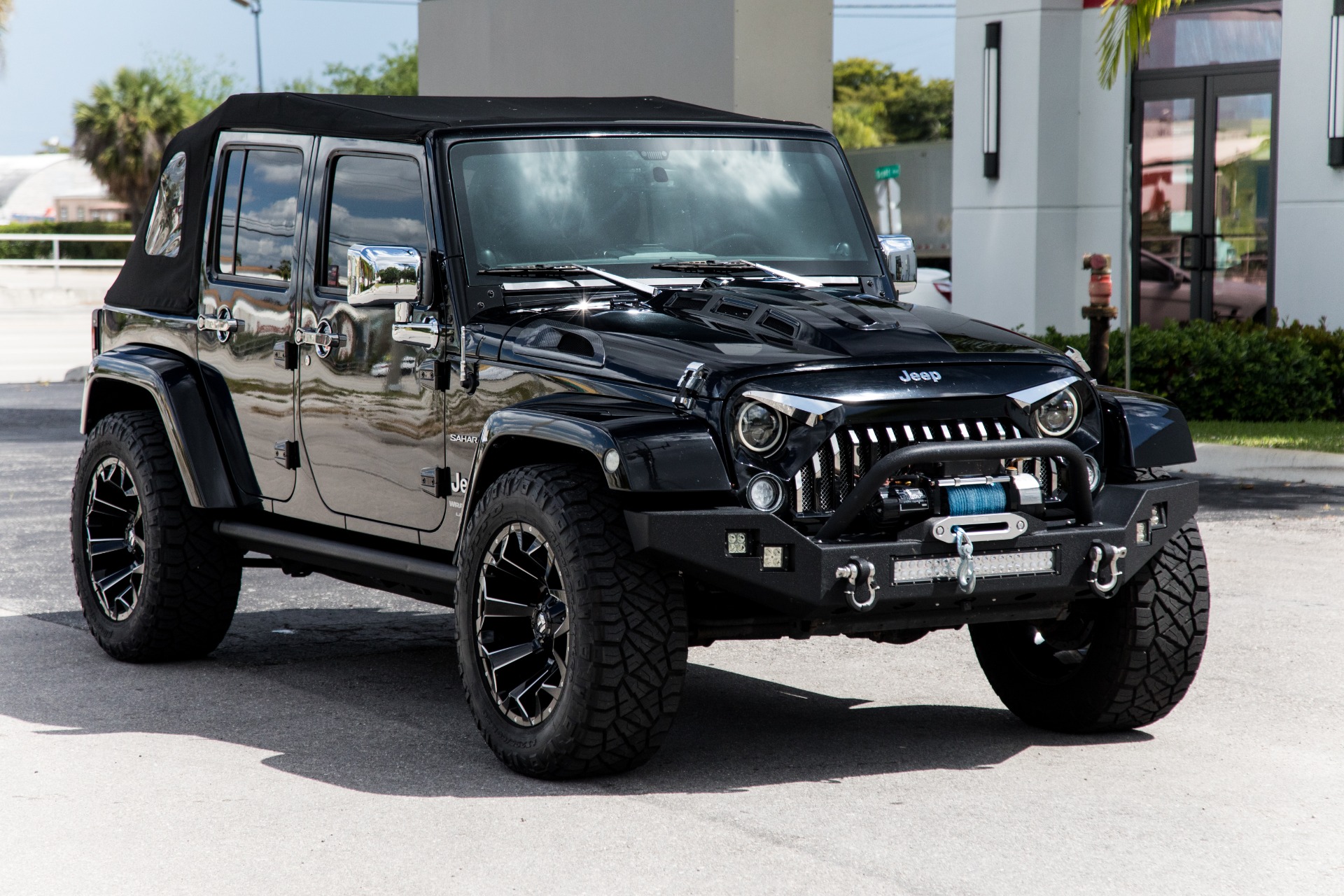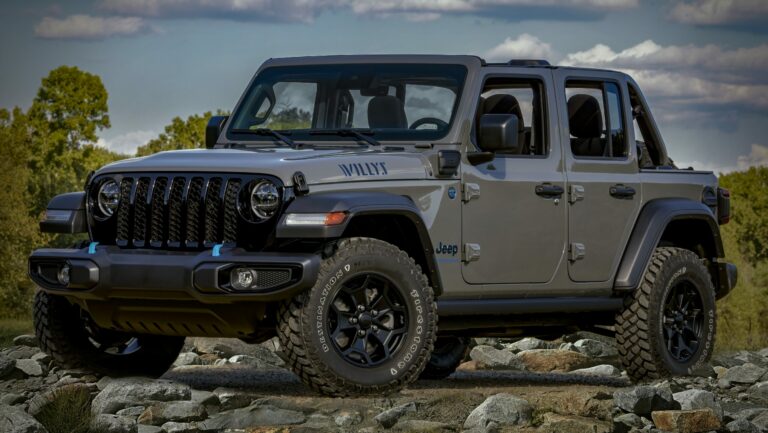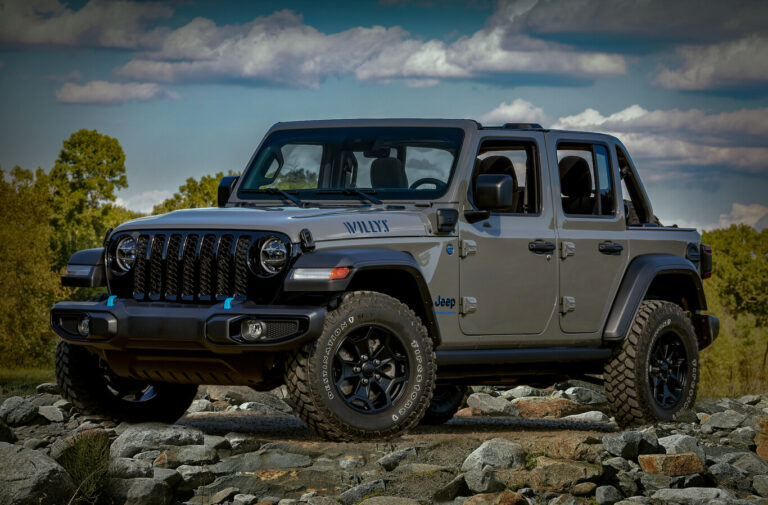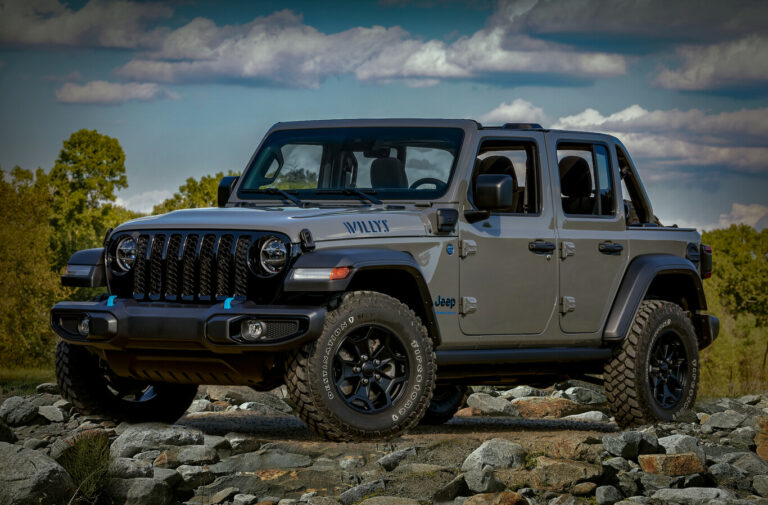Wrangler Jeep 1996: Navigating the Transition of an Icon
Wrangler Jeep 1996: Navigating the Transition of an Icon jeeps.truckstrend.com
The year 1996 holds a unique, almost mythical, place in the annals of Jeep Wrangler history. For many enthusiasts and casual observers alike, "Wrangler Jeep 1996" evokes a specific image, yet the reality is more nuanced. Unlike most automotive model years, 1996 was not a conventional production year for the Jeep Wrangler in North America. Instead, it marked a pivotal transition, a brief hiatus between the end of one beloved generation, the YJ, and the revolutionary dawn of another, the TJ.
This article delves into the fascinating period of the "1996 Wrangler," exploring the characteristics of the models that bookended this unique year—the last of the YJs and the very first of the TJs—and providing a comprehensive guide for anyone interested in these enduring off-road legends. We’ll uncover what makes these vehicles special, what to look for when buying, and how to maintain and enjoy a piece of Jeep history from this pivotal era.
Wrangler Jeep 1996: Navigating the Transition of an Icon
Understanding the "1996" Conundrum: The YJ-TJ Transition
The most crucial piece of information for anyone seeking a "1996 Wrangler" is this: there was no conventional 1996 model year for the Jeep Wrangler produced for sale in North America. Production of the YJ-generation Wrangler (distinguished by its square headlights and leaf-spring suspension) concluded in 1995. The subsequent generation, the TJ (which brought back round headlights and introduced coil-spring suspension), began production in 1996, but it was officially designated as a 1997 model year vehicle.
This means that if you encounter a vehicle being sold as a "1996 Wrangler," it is most likely one of two things:
- A late-production 1995 YJ Wrangler: These vehicles were built in 1995 but sold into 1996. They represent the final iteration of the YJ, often incorporating all the refinements of that generation.
- An early-production 1997 TJ Wrangler: While officially a 1997 model, these TJs rolled off the assembly line starting in the latter half of 1996. They are the inaugural models of a generation that would redefine the Wrangler’s ride comfort and off-road articulation.
![]()
Understanding this distinction is paramount, as the YJ and TJ are fundamentally different vehicles, each offering a distinct driving and ownership experience. Our exploration will, therefore, encompass both of these influential models that define the "1996" period in Wrangler lore.
The End of an Era: The YJ Wrangler (Relevant to "1996" via Late ’95 Models)
The YJ Wrangler, produced from 1987 to 1995, was the first Jeep branded specifically as "Wrangler." While controversial for its square headlights among purists, it carried forward the rugged spirit of its CJ predecessors while attempting to modernize the platform. The late 1995 models represent the pinnacle of YJ development.
Design & Aesthetics

The YJ is instantly recognizable by its distinct square headlights, a feature that set it apart from all other Jeep CJs and Wranglers. Its body lines are classic Jeep: boxy, utilitarian, and designed for function over form. The interior is basic, functional, and built to withstand the elements, featuring easy-to-clean surfaces and minimal creature comforts. Iconic removable doors and a fold-down windshield were standard, embodying the open-air Jeep experience.
Powertrain
Late YJ models typically featured two robust engine options:
- 2.5-liter AMC I4 (123 hp): A reliable four-cylinder engine, offering decent fuel economy for its time and sufficient power for light off-roading and city driving.
- 4.0-liter AMC I6 HO (High Output – 180 hp): This inline-six is legendary for its torque, durability, and simplicity. It’s the engine of choice for serious off-roaders and those seeking more highway capability.

Both engines were typically paired with either a five-speed manual transmission (AX-5 for the 2.5L, AX-15 for the 4.0L) or a three-speed automatic (TorqueFlite 999 or 32RH). The Command-Trac (NP231) part-time transfer case was standard, providing robust 4×4 capability.
Chassis & Suspension
The YJ retained the traditional leaf-spring suspension both front and rear, coupled with solid axles (Dana 30 front, Dana 35 or optional Dana 44 rear). This setup, while durable and simple, resulted in a relatively stiff and bouncy on-road ride. Off-road, the leaf springs offered limited articulation compared to modern setups but were highly capable in many terrains, particularly when modified.
Common Trims (1995 YJ)
- SE: The base model, often with the 2.5L engine.
- Sport: A step up, usually with the 4.0L engine and some convenience features.
- Sahara: The most upscale trim, featuring unique exterior graphics, fender flares, special interior fabrics, and more standard features.
The Dawn of a New Legend: The TJ Wrangler (Relevant to "1996" via Early ’97 Models)
The 1997 model year TJ Wrangler, with production beginning in 1996, was a revolutionary leap forward for the Jeep brand. It addressed many of the YJ’s shortcomings while staying true to the Wrangler’s core identity.
Revolutionary Changes
The most striking visual change was the return to round headlights, a nod to the beloved CJ-series and a clear signal of Jeep listening to its purist fanbase. However, the most significant mechanical advancement was the introduction of a coil-spring suspension system at all four corners, replacing the YJ’s leaf springs. This change dramatically improved on-road ride comfort and, crucially, provided significantly enhanced wheel articulation for off-road prowess.
Powertrain
The TJ carried over the proven and beloved 2.5-liter I4 and 4.0-liter I6 engines from the YJ, a testament to their reliability and performance. Transmission options also remained similar, with the AX-5/AX-15 manual transmissions and the 32RH automatic for the 4.0L. The NP231 transfer case continued its duty.
Chassis & Suspension
The coil-spring suspension was a game-changer. It allowed for more independent wheel movement, leading to a smoother ride on pavement and superior articulation over uneven terrain, keeping tires on the ground for better traction. The TJ also introduced a new steering box and improved steering geometry, making it feel more precise and stable than the YJ.
Interior Refinements
While still rugged, the TJ’s interior was a significant upgrade in terms of ergonomics, safety, and comfort. The dashboard was redesigned, air conditioning became more common, and features like dual airbags were introduced. It still offered the open-air experience with removable doors and a fold-down windshield, albeit with a more refined feel.
Common Trims (1997 TJ)
- SE: The base model, primarily with the 2.5L engine.
- Sport: The most popular trim, almost always with the 4.0L engine, wider fender flares, and available options like alloy wheels.
- Sahara: The premium trim, featuring color-matched fender flares, unique wheels, upgraded interior materials, and more standard luxury features.
Key Considerations for "1996 Era" Wrangler Ownership
Whether you’re looking at a late ’95 YJ or an early ’97 TJ, these vehicles are now over a quarter-century old and require careful consideration.
Buying Advice
- Identify the Model: First and foremost, confirm if you’re looking at a YJ or a TJ. Check the VIN, build date, and most obviously, the headlights and suspension type.
- Rust is the Enemy: Frame rust is the most critical issue. Inspect the frame thoroughly, especially around the control arm mounts, skid plates, and suspension components. Body rust (fenders, rocker panels, floorboards) is also common.
- Engine Health: Listen for unusual noises (knocks, ticking), check for leaks, and ensure regular oil changes were performed. The 4.0L is robust but can develop oil leaks from the rear main seal or valve cover.
- Transmission & Drivetrain: Check for smooth shifting in both manual and automatic transmissions. Test 4×4 engagement and listen for grinding or clunking from the transfer case or axles.
- Steering & Suspension: Look for excessive play in the steering wheel, which could indicate worn steering components (tie rods, drag link, ball joints). Check for sagging suspension, especially on TJs with coil springs.
- Previous Modifications: Many Wranglers are modified. Ensure modifications are professionally installed and don’t compromise safety or reliability. Lift kits, for example, can put stress on other components if not done correctly.
Maintenance & Upkeep
Both YJs and early TJs are relatively simple vehicles, making them appealing for DIY enthusiasts.
- Routine Maintenance: Adhere to regular oil changes, fluid checks (transmission, transfer case, differentials), and grease fittings.
- Rust Prevention: Regular washing, especially after winter or off-road excursions, and applying rust-inhibiting treatments are crucial.
- Common Wear Items: Expect to replace items like U-joints, tie rod ends, ball joints, and various bushings over time.
- Soft Top/Doors: Inspect soft tops for tears and zippers for functionality. Half doors often come with fabric uppers that can wear out.
Modifications & Customization
The aftermarket for both YJs and TJs is immense, allowing for endless customization.
- Lift Kits: Ranging from mild to extreme, lifts allow for larger tires and increased ground clearance.
- Tires: A common upgrade, larger tires significantly enhance off-road capability.
- Armor: Aftermarket bumpers, rock sliders, and skid plates protect the vehicle during aggressive off-roading.
- Performance Upgrades: Cold air intakes, exhaust systems, and even engine swaps are popular.
Challenges & Benefits
- Challenges: Rust remains the biggest threat. Older technology means fewer modern conveniences (though this is often a benefit for purists). Parts availability is generally good, but specific trim pieces might be hard to find. Fuel economy is not a strong suit.
- Benefits: Unparalleled off-road capability, simple design, strong aftermarket support, a vibrant and supportive community, excellent resale value, and a unique driving experience that connects you to the road (or trail) like few other vehicles. They are true go-anywhere machines.
Driving Experience and Off-Road Capability
Driving a "1996 era" Wrangler is a visceral experience.
- On-Road: The YJ’s leaf-spring suspension results in a firm, often bouncy ride, and its steering can feel vague. The TJ, with its coil springs, offers a significantly more refined and comfortable ride, making it much more palatable for daily driving. Both are not quiet vehicles, especially with soft tops, and wind noise is prevalent. They are not speed demons but have enough power for highway cruising, particularly the 4.0L.
- Off-Road: This is where both generations truly shine. The YJ, despite its leaf springs, is a highly capable off-roader, known for its ruggedness and simplicity. The TJ, however, is often considered superior due to its coil-spring suspension, which allows for incredible wheel articulation, keeping more rubber on the ground over challenging obstacles. Both have excellent approach and departure angles, short wheelbases for maneuverability, and robust 4×4 systems. They embody the spirit of adventure and are true workhorses off the pavement.
Practical Advice and Actionable Insights
- Do Your Homework: Thoroughly research the YJ and TJ models. Understand their differences, common issues, and specific characteristics.
- Get a Pre-Purchase Inspection: Before buying, always have a qualified mechanic (preferably one familiar with Jeeps) inspect the vehicle, paying close attention to the frame and drivetrain.
- Budget for the Unexpected: Remember, these are older vehicles. Factor in potential costs for maintenance, repairs, and perhaps even some upgrades.
- Embrace the Community: Join online forums, local Jeep clubs, and attend events. The Jeep community is incredibly supportive and a valuable resource for advice, parts, and camaraderie.
- Learn to DIY: Owning an older Wrangler often means getting your hands dirty. Learning basic maintenance and repairs will save you money and deepen your connection with your vehicle.
Estimated Pricing for Jeep Wranglers Relevant to the 1996 Period
As established, there was no official 1996 model year Wrangler. The table below provides estimated pricing for the final YJ models (1995) and the initial TJ models (1997) that would have been sold or produced around the 1996 calendar year. Current market values are highly variable based on condition, mileage, modifications, and regional demand.
| Model Year | Model | Trim | Original MSRP (Approx.) | Current Market Value (USD, Condition Dependent) | Notes |
|---|---|---|---|---|---|
| 1995 | YJ | SE | $13,500 – $15,000 | $5,000 – $10,000 | Last of the square headlight, leaf-spring Wranglers. Value highly dependent on rust and mechanical condition. |
| 1995 | YJ | Sport | $15,000 – $17,000 | $6,000 – $12,000 | Often came with the 4.0L I6. |
| 1995 | YJ | Sahara | $17,000 – $20,000 | $7,000 – $15,000 | Top-tier YJ trim with more features. Well-preserved Saharas command higher prices. |
| 1997 | TJ | SE | $16,000 – $18,000 | $7,000 – $13,000 | First year of the coil-spring, round headlight TJ. Early models are sought after. |
| 1997 | TJ | Sport | $18,000 – $21,000 | $8,000 – $15,000 | Most popular TJ trim, commonly with the 4.0L I6. Excellent value for off-road capability. |
| 1997 | TJ | Sahara | $20,000 – $24,000 | $9,000 – $18,000+ | Premium TJ trim. Pristine or low-mileage examples can exceed this range. |
Note: The 1996 model year Wrangler was skipped. Prices reflect the last YJ production year and the first TJ production year. Current market values are highly influenced by the vehicle’s condition, mileage, modifications, maintenance history, and geographic location. Heavily modified or exceptionally well-preserved examples can fall outside these ranges.
Frequently Asked Questions (FAQ) about Wrangler Jeep "1996"
Q1: Was there a 1996 Jeep Wrangler model year?
A1: No, there was no conventional 1996 model year for the Jeep Wrangler produced for sale in North America. Production of the YJ (square headlights) ended in 1995, and the new TJ (round headlights, coil springs) began production in 1996 as a 1997 model year vehicle.
Q2: So, if I see a "1996 Wrangler" for sale, what is it?
A2: It’s most likely either a late-production 1995 YJ Wrangler (sold into 1996) or an early-production 1997 TJ Wrangler (built in late 1996). Always verify the VIN and production date to be sure.
Q3: What are the main differences between a YJ and a TJ?
A3: The most noticeable differences are the headlights (YJ has square, TJ has round) and the suspension (YJ has leaf springs, TJ has coil springs). The TJ also offered a more refined interior and improved on-road manners due to its coil-spring suspension.
Q4: Which is better for off-roading, a YJ or an early TJ?
A4: Both are highly capable. However, the TJ’s coil-spring suspension offers superior articulation, allowing the wheels to maintain better contact with uneven terrain, often making it more capable off-road in stock form or with comparable modifications. The YJ is still a very rugged and capable platform.
Q5: Are parts still available for these older Wranglers?
A5: Yes, parts availability is generally excellent for both YJs and TJs due to their popularity and the robust aftermarket support. Many components are interchangeable with other Jeep models of similar vintage.
Q6: What are the common rust spots to check on these Jeeps?
A6: The frame is the most critical area for rust, particularly around skid plates, control arm mounts, and where the frame rails meet the body. Other common rust spots include the floorboards, rocker panels, rear cross member, and fender wells.
Q7: What’s considered good mileage for a "1996 era" Wrangler?
A7: For a vehicle from this era, mileage is less critical than maintenance history and condition. While lower mileage is always preferred, a well-maintained Wrangler with 150,000-200,000 miles can still have plenty of life left, especially with the 4.0L engine. Rust and neglect are bigger concerns than high mileage.
Q8: Can I daily drive a YJ or early TJ?
A8: Yes, many people daily drive them. However, be prepared for a less refined experience compared to modern vehicles. YJs are rougher on the road, while TJs offer more comfort. Both are noisy, especially with soft tops, and lack many modern conveniences. Their ruggedness and fun factor often outweigh these drawbacks for enthusiasts.
Conclusion
The "Wrangler Jeep 1996" period represents a unique chapter in the storied history of this iconic American vehicle. While no conventional 1996 model year exists, this transition phase gave us the robust, no-nonsense YJ in its final form and introduced the revolutionary TJ, setting a new standard for off-road capability combined with improved on-road comfort.
Whether you’re drawn to the classic, rugged simplicity of a late-model YJ or the more refined yet equally capable design of an early TJ, owning a Wrangler from this era means acquiring a piece of automotive heritage. These vehicles embody adventure, freedom, and a connection to the open road—or the challenging trail—that few others can offer. With proper care, attention to rust, and a willingness to embrace their unique quirks, a "1996 era" Wrangler can provide years of exhilarating experiences and stand as a testament to timeless design and enduring off-road prowess.




